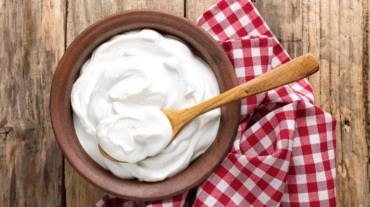Chat with ![]()

Chat with ![]()




When it comes to home remedies, yogurt is a favourite of many. It is part of skin care routines of many women, as it has lactic acid. It works as a gentle exfoliant, which can help to get rid of dead skin. It also has the power to make skin super soft. Some even use it yogurt for yeast infection in the vaginal area. But is it actually safe to use yogurt on your private parts? Let’s find out what an expert has to say about yogurt as a home remedy for treating yeast infection.
A vaginal yeast infection, also known as candidiasis, is a common fungal infection that occurs when there is an overgrowth of Candida, a type of yeast, in the vagina. Dr Pratibha Singhal, Director, Department of Gynaecology and Obstetrics, Cloudnine Group of Hospitals, says candida is normally present in small amounts, but various factors can disrupt the balance, leading to an infection. Some of the symptoms include:
• Itching and irritation in the vaginal area
• Burning sensation, especially during urination
• Thick and white vaginal discharge, which looks more like cottage cheese
• Redness and swelling of the vulva

There are many factors that can lead to the overgrowth of the fungus Candida albicans.
The use of antibiotics can disturb the balance of bacteria in the body, and this can allow Candida to proliferate, the expert tells Health Shots.
Fluctuations in hormone levels such as those seen during pregnancy, menstrual cycles or use of hormonal contraceptives can create an environment that is perfect for yeast overgrowth.
Conditions or medications that weaken the immune system such as HIV or corticosteroids can increase the risk of yeast infection down there.
Controlling diabetes is very important because if it is uncontrolled, your blood sugar levels can go high. This provides an environment favourable for yeast growth.

A diet high in sugar and refined carbohydrates can also promote the growth of Candida.
Wearing tight or non-breathable clothes, particularly underwear, can create a warm and moist environment that encourages yeast growth.
Use of harsh soaps, vaginal douches or scented feminine products can disrupt the natural balance of the vaginal environment, leading to an infection.
A 2012 study published in the Archives of Gynecology and Obstetrics found that a mixture of yogurt and honey, which was applied vaginally, was more effective than an antifungal cream for treating a vaginal yeast infection in pregnant women.
Dr Singhal says yogurt is often suggested as a home remedy for a yeast infection due to its probiotic content, specifically the presence of beneficial bacteria, such as Lactobacillus acidophilus. Here’s how yogurt may help:
This dairy product contains live cultures of “good” bacteria, particularly Lactobacillus acidophilus. These bacteria help to maintain the balance of microorganisms in the vagina by inhibiting the overgrowth of harmful yeast such as Candida.

The natural balance of the vaginal flora can be disrupted by factors like antibiotics or hormonal changes, so applying yogurt with live cultures topically or including it in the diet may help to restore this balance.
For topical application, make sure to use plain, unsweetened yogurt with live cultures. You can dip a clean tampon into the yogurt or apply it directly to the affected area using clean fingers or a cotton pad, suggests the expert.
You can also apply a thin layer of yogurt to the external genital area, especially where there is itching or irritation. But here’s a word of caution – please don’t experiment with home remedies without complete awareness. Depending on the severity of your health concern, you can use antifungal creams, ointments prescribed by a gynaecologist. There are single-dose oral medications too to treat yeast infections.
Get Latest Updates on Intimate Health, Feminine Hygiene, Menstruation, Sexual Health